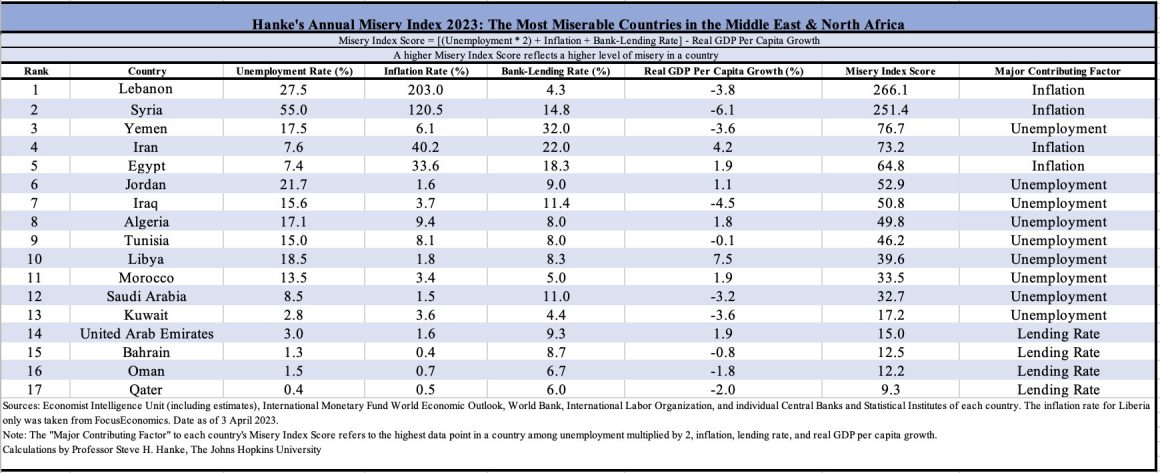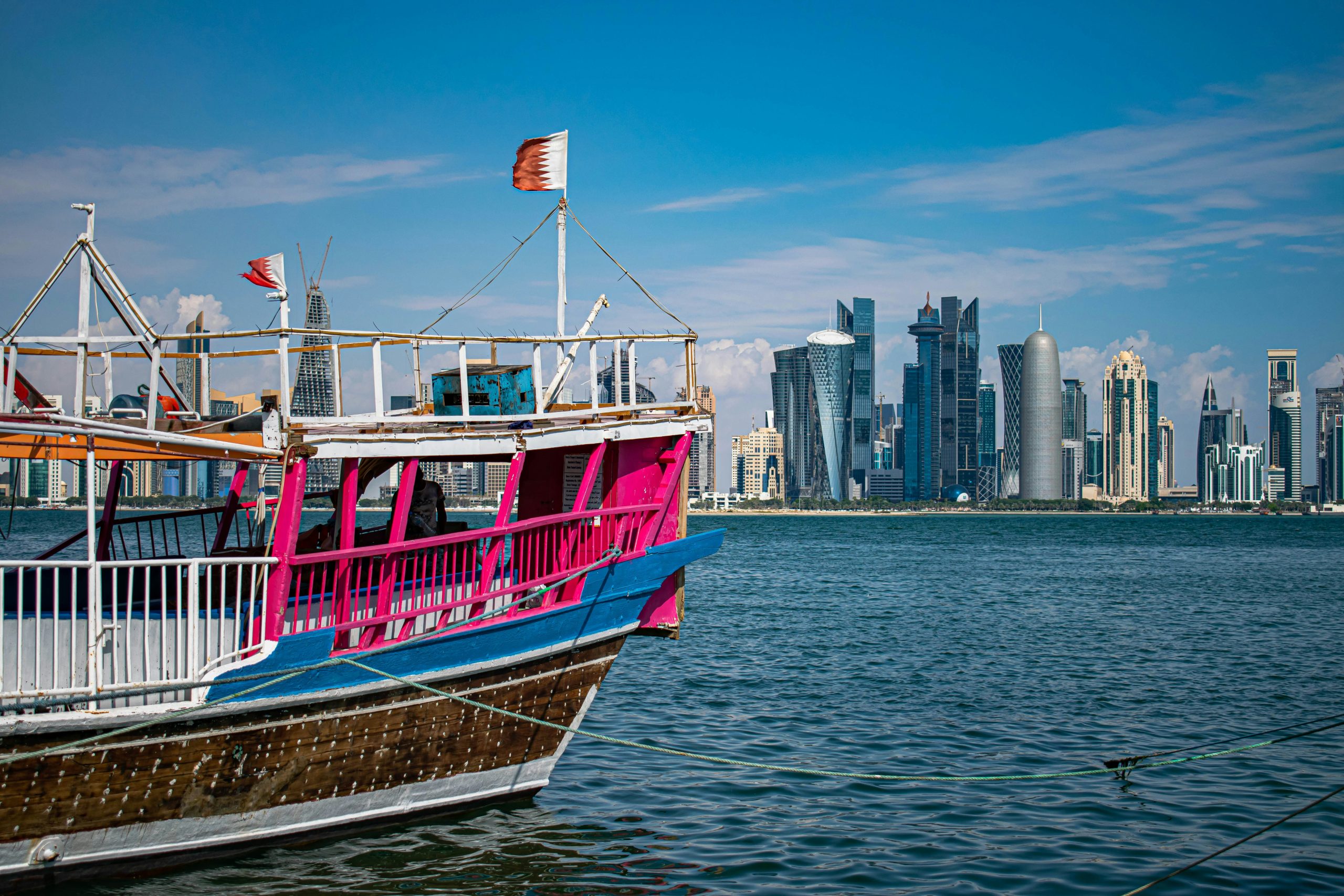Qatar, Kuwait, the United Arab Emirates, Bahrain, and Oman have been ranked as the five least miserable countries in the MENA region due to inflation that has been on the rise over the past three years.
Qatar has ranked as the least miserable country in the Middle East and North Africa region and the fourth least miserable globally in Hanke’s 2023 Annual Misery Index.
The annual index is published by Steve Hanke, an American economist and professor of applied economics at Johns Hopkins University.
The rankings are carried out based on multiple factors including inflation, lending rate and the level of unemployment in each country.

Qatar, Kuwait, the United Arab Emirates, Bahrain, and Oman — the five least miserable in the MENA region — attributed the lending rate as the major contributing factor.
In 2021, Qatar ranked first in the Middle East and sixth worldwide in a list identifying the best countries to live and work in for expatriates by the HSBC Expat Explorer Survey 2020.
Numerous international organisations, including the International Monetary Fund, have provided a positive economic outlook for Qatar.
The IMF has projected that Qatar’s gross domestic product would witness a 2.2 percent increase this year.
On Wednesday, Fitch Ratings upgraded Qatar’s Long-Term Foreign-Currency Issuer Default Rating to third highest. The rating came as Qatar expanded its liquified natural gas (LNG) fields.
In February, Qatar announced a new LNG expansion project, North Field West. The expansion would boost the local LNG production to 142 million tonnes per annum before the end of 2030.
The expansion would contribute to boosting Qatar’s economy, with the country already positioned as one of the top leading LNG producers alongside the United States and Australia.
Most miserable countries in the region
In the MENA region, Lebanon topped the list of the most miserable countries mainly due to inflation that has been on the rise over the past three years. Lebanon also ranked as the third most miserable country in the world after Venezuela and Argentina.
Lebanon’s average inflation rate stood at 222.42 percent in 2023, up from 171.2 percent in 2022, and 154.8 percent in 2021.
The 2020 Beirut Port Explosion coupled with the COVID-19 outbreak contributed to the country’s worst economic downfall since the 1975 civil war. The Lebanese pound reached a record-low value in 2023, losing about 97 percent of its value to the U.S. dollar.
Most depositors in Lebanon are still unable to access their savings, pushing more than 80 percent of the country’s population into poverty.
Syria ranked as the second most miserable country in the MENA region and fourth most miserable globally, with inflation also being the main contributing factor.
The country’s economy hit an all-time low since the beginning of the war in Syria, waged by the Bashar al-Assad regime after responding to peaceful pro-democracy protests with violence. Sanctions on Assad and widespread corruption have been major contributors to the crisis.
Last year, the Syrian pound reached 7,000 pounds to the U.S. dollar on the black market.
After Syria, Yemen ranked as the third most miserable country in the MENA region and ninth globally, with unemployment being the main contributing factor to its ranking.
Yemen has been described as the world’s worst humanitarian crisis following a nine-year brutal war between a Saudi-led military coalition and Iran-backed Houthi rebels.
The war has killed an estimated 233,000 people, according to United Nations figures, though the death toll remains disputed.







